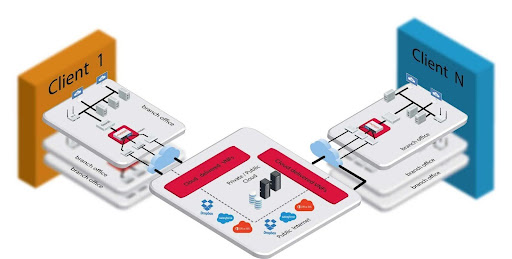In the ever-evolving landscape of networking, Software-Defined Wide Area Network (SD-WAN) Services have emerged as a transformative force. Businesses are navigating a new era of connectivity, and understanding the key trends in SD-WAN Services is crucial for staying ahead in this digital age.
Understanding SD-WAN Services:
SD-WAN Services represent a seismic shift from traditional networking architectures. This innovative approach utilizes software-defined principles to centralize control, offering enhanced agility, cost reduction, and simplified management. As businesses increasingly seek efficient and flexible networking solutions, SD WAN Services have become a cornerstone of modern connectivity.
Key Trends in SD-WAN Services:
-
Cloud Integration:
- One of the defining trends in SD-WAN Services is their integration with cloud environments. This integration facilitates direct access to cloud applications and services, eliminating the need for traffic backhauling to centralized data centers. The result is improved performance for cloud-based applications, a crucial consideration in today’s cloud-centric business landscape.
-
Security Enhancements:
- With the escalating threat landscape, security has become a paramount concern for businesses. SD-WAN Services are rising to the challenge by incorporating advanced security features. These include integrated firewalls, robust encryption, and threat intelligence to safeguard network traffic and data from unauthorized access and cyber threats.
-
Application Optimization:
- Businesses rely on a diverse array of applications to support their operations. SD-WAN Services are responding to this by prioritizing application performance optimization. Dynamic traffic routing, Quality of Service (QoS) policies, and application-aware routing algorithms ensure that critical applications receive priority treatment. This not only enhances user experience but also boosts overall productivity.
-
Edge Computing Integration:
- The emergence of edge computing as a paradigm is reshaping network requirements. SD-WAN Services are adapting to seamlessly integrate with edge computing environments. This integration provides low-latency connectivity and efficient data transport between edge devices and centralized resources, catering to the demands of distributed architectures.
-
AI and Machine Learning:
- The complexity of network management is on the rise, and SD-WAN Services are tapping into the capabilities of Artificial Intelligence (AI) and Machine Learning (ML). These technologies enable predictive analytics, anomaly detection, and automated remediation. The result is enhanced network performance, improved reliability, and a reduction in operational overhead.
-
Hybrid and Multi-Cloud Connectivity:
- As businesses embrace multi-cloud strategies, SD-WAN Services are facilitating seamless connectivity between on-premises infrastructure and multiple cloud providers. This trend empowers organizations to leverage the benefits of different cloud platforms while maintaining control and visibility over their network traffic.
Implications for Businesses:
For businesses, these trends in SD-WAN Services carry profound implications. Embracing cloud integration, enhancing security measures, optimizing application performance, and adopting emerging technologies are vital steps in creating agile and resilient networks. The ability to adapt to these changes positions businesses for success in an era where connectivity is a linchpin of competitiveness.
Choosing the Right SD-WAN Services Provider:
Selecting the right SD-WAN Services provider is a strategic decision. Businesses should evaluate providers based on their experience, reliability, scalability, security features, and support services. A trusted provider becomes a strategic partner, guiding businesses through the implementation process and ensuring that their networking infrastructure aligns seamlessly with strategic objectives.
Conclusion:
As the networking landscape evolves, SD-WAN Services stand as a linchpin of modern connectivity solutions. By embracing key trends such as cloud integration, security enhancements, application optimization, edge computing integration, AI and ML capabilities, and multi-cloud connectivity, businesses can navigate the future with confidence. The result is agile, secure, and optimized networking solutions that propel organizations into a new era of connectivity.


